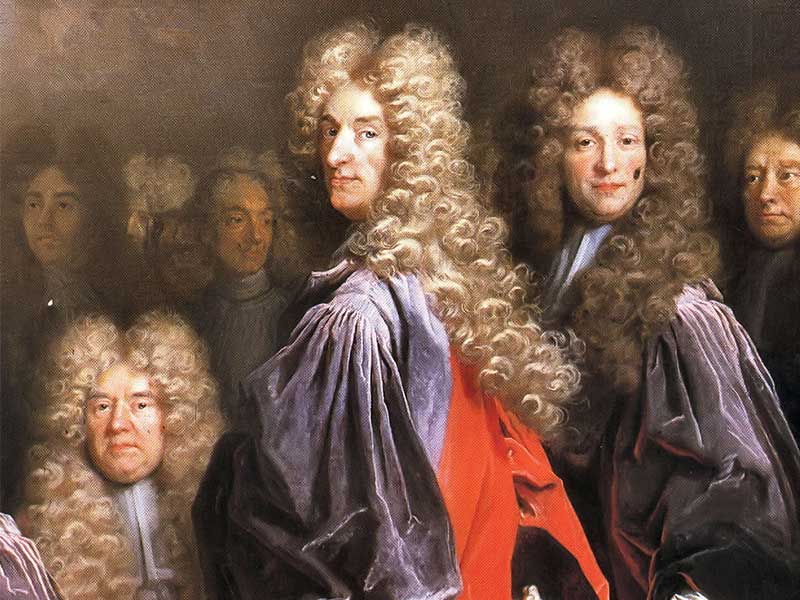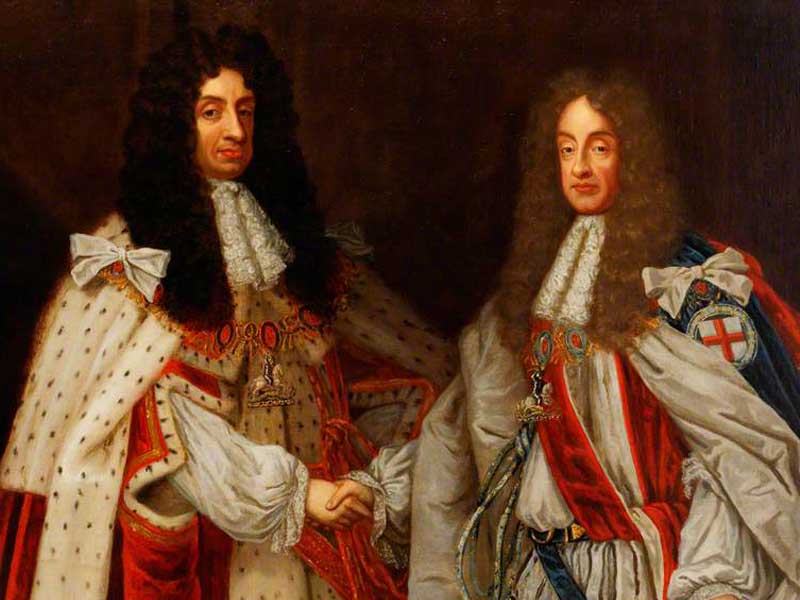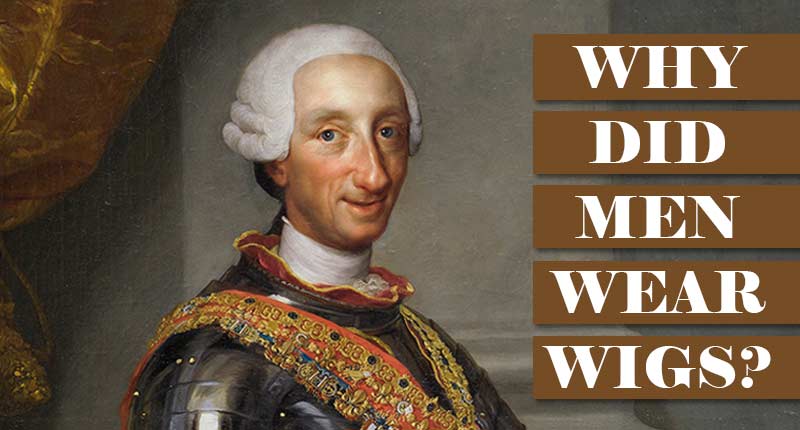Nowadays, not only women but men wear wigs to cover their baldness and change their external appearance. There are more and more people suffering balding although they are young, so the use of this hair system has become rather common.
In the past, wigs were also widely worn. But the purpose of wearing hairpieces in each period is different. Why did men wear wigs? Let’s check it out.
Why Did Men Wear Wigs?
Today, it is not hard to see someone in wigs. They wear wigs due to plenty of reasons such as baldness, aesthetics or nature of work… But do you know that wigs were a fashionable item form the past, in the late 17th century? From Western countries and America, it spread out and become popular all over the world.

Did men of history wear wigs? In the past, people preferred long hair than short. However, in the 1500s, a syphilis epidemic occurred in Europe and left people with patchy hair loss. To conceal the sores, baldness, people created and wore wigs. At first, only people from the upper class wore wigs, but it is gradually used by the other classes and became the trend. In the 1500s, they used wigs to cover up the thing they do not like. The wigs were also coated with powders scented to hide any funky aromas.
Men Wear Wigs In The 1700
When and why did men wear powdered wigs? A powdered wig doesn’t seem so strange now, does it? The image of judges wearing light gray or white wigs is very familiar to many people. But only some know about the history of this exciting hair item.
These wigs first appeared in Egypt aimed at protecting the head from the sun in the deserts. Later, women in Rome wore them as a fashion accessory. But it was until the 17th century, this wig started becoming popular due to an exciting reason – get rid of head lice. The French wore it to protect their real hair. Instead of having their shaved heads, they wear wigs so that lice do not reach the bio hair.

Why did men wear wigs in the 1700s? Although the original purpose was to prevent disease, the wig quickly became a fashion icon. In 1624, Louis XIII – King of France wore wigs to cover his bald head. And by the mid-1600s, it was more popular as King Louis XIV found that wearing wigs was so beautiful. This trend was later adopted by King Charles II in England and the rich.
Now you know the men wear wigs in England very early, right? Appearing in the UK, the first wigs were the same color as natural hair. Then it was created with different colors: white, gray… by sprinkling the powder. And by 1705, the judges began wearing wigs to match the prevailing trend and remain their solemn. The wig of the judge is called “peruke” or “periwig”.
Other interesting articles:
- How Bald Are You? – Male Pattern Baldness Stages (Norwood Scale)
- What Causes Male Pattern Baldness And How To Deal With It
- Afro Toupee For The Black – Are You Prepared For A Good Thing?
Men Wear Wigs In The 18th Century
In the 18th century, wig reached its golden age in colonial America. But in fact, this hair trend began during the last half of the previous century. In the early years of the 18th century, the periwig reigned with its cascade of curls. It was commonly made of human, horse or goat hair. Among them, real human hair wigs were the best and most expensive. In colonial times, people wear wigs for many purposes. Why did colonial men wear wigs?
For older look
Wearing wigs was available to most classes of society by the mid 18th century. Men wore wigs to make them look more mature and older than their ages. The hair created a patriarchal appearance.

Distinguish social classes
Did colonial men wear wigs? Yes, they wore wigs to make the class distinction clear. The color of wigs also reflected the class and position of the wearers. The expert explained that tradesmen usually wore brown wigs, professionals donned gray wigs; white wigs were for military officers and judges. Typically, white wigs were used on formal occasions, but people always created this color wig by powdering.
Wigs Died
Wigs were dying out by the late 18th century when the French outed this hair during the Revolution. And the British also stopped using the hair system after the first Prime Minister William Pitt levied a tax on hair powder in 1795.
Wigs Become A Fashionable Item Now
Like outfits, jewelry… wigs have become a fashion statement rather than an item for hair loss. Some wig wearers say things like “What wig should I pair with this costume?”. So why did men wear wigs during victorian times? As it:
– Disguise thinning hair or hair loss
– Change the hairstyle whenever you want
– Protect your bio hair
– Guarantee good hair days
– Save you time

Final Thoughts
Through the ups and downs for nearly two centuries, wigs come back and become a must-have item for everyone, both men and women. And you still see the image of judges in England wearing wigs. Why did men wear wigs instead of just their hair? As they think the hair represents their authority.
It was not strange for men to own a wig. The hair systems for men come in a variety of shapes, colors, and sizes that suits for daily wear, for business, for events. Wigs are provided to match certain costumes. Different hairstyles and types of wigs are also used for many purposes and occasions.
Hopefully, after this post, you will have a deep understanding to answer the question “Why did men wear wigs?” if you are looking for the best wig for yourself, visit Hairsystem. There are multiple choices of hairpieces at our company that will completely satisfy the wearers’ request.
We are a renowned human hair vendor and always try to help men overcome their hair baldness fear. We say no with synthetic fibers, so our wigs are the best high-quality. It also well balances the naturalness, versatility, and durability.
Feel free to contact Hairsystem at any time via our hotline or email: admin@hairsystem.net. We are ready to support customers 24/7. Our sales teams will explain any of your questions and give a piece of advice.
Or leave your comments to let us know what you’re thinking. Thanks a lot!

